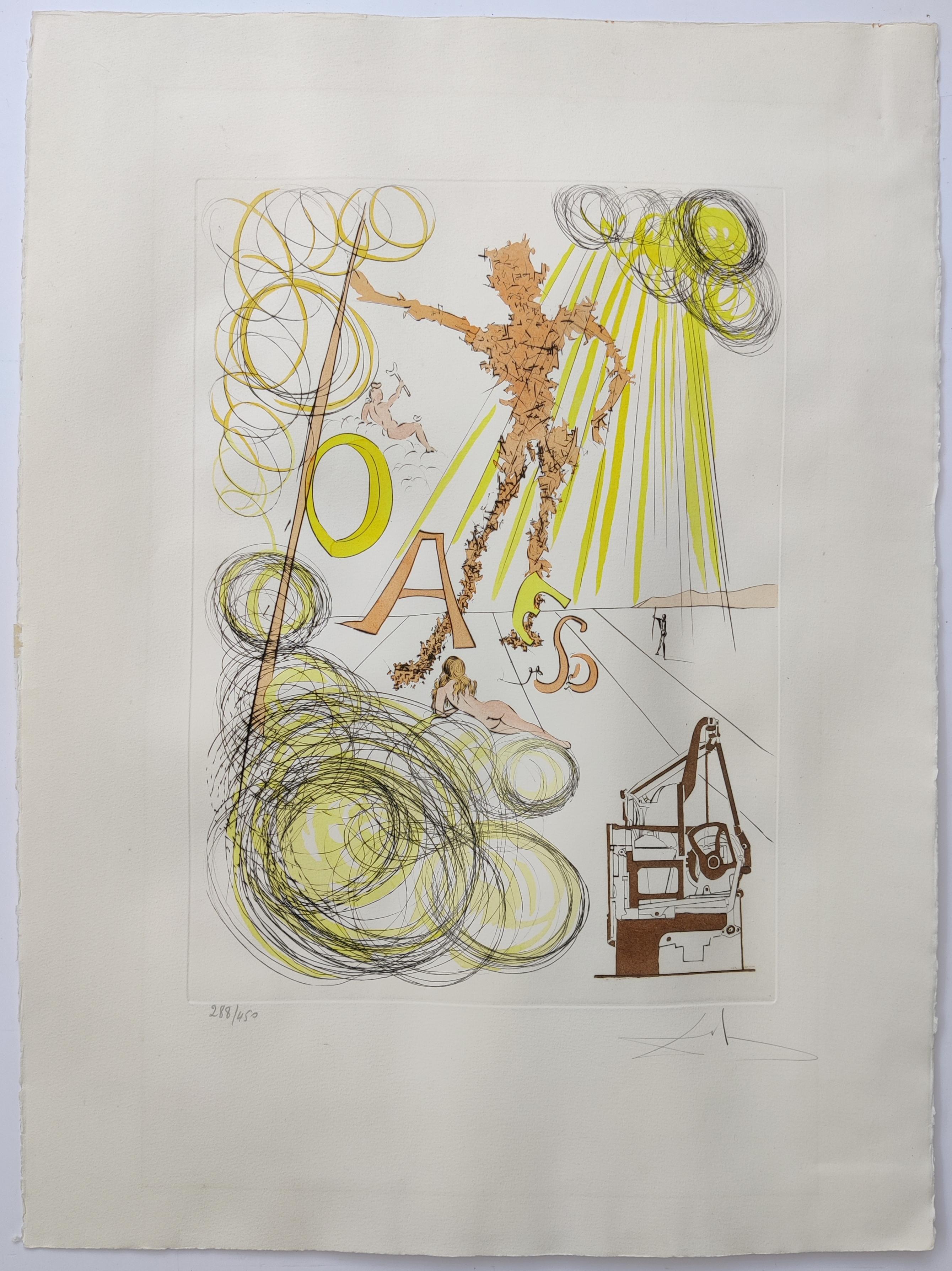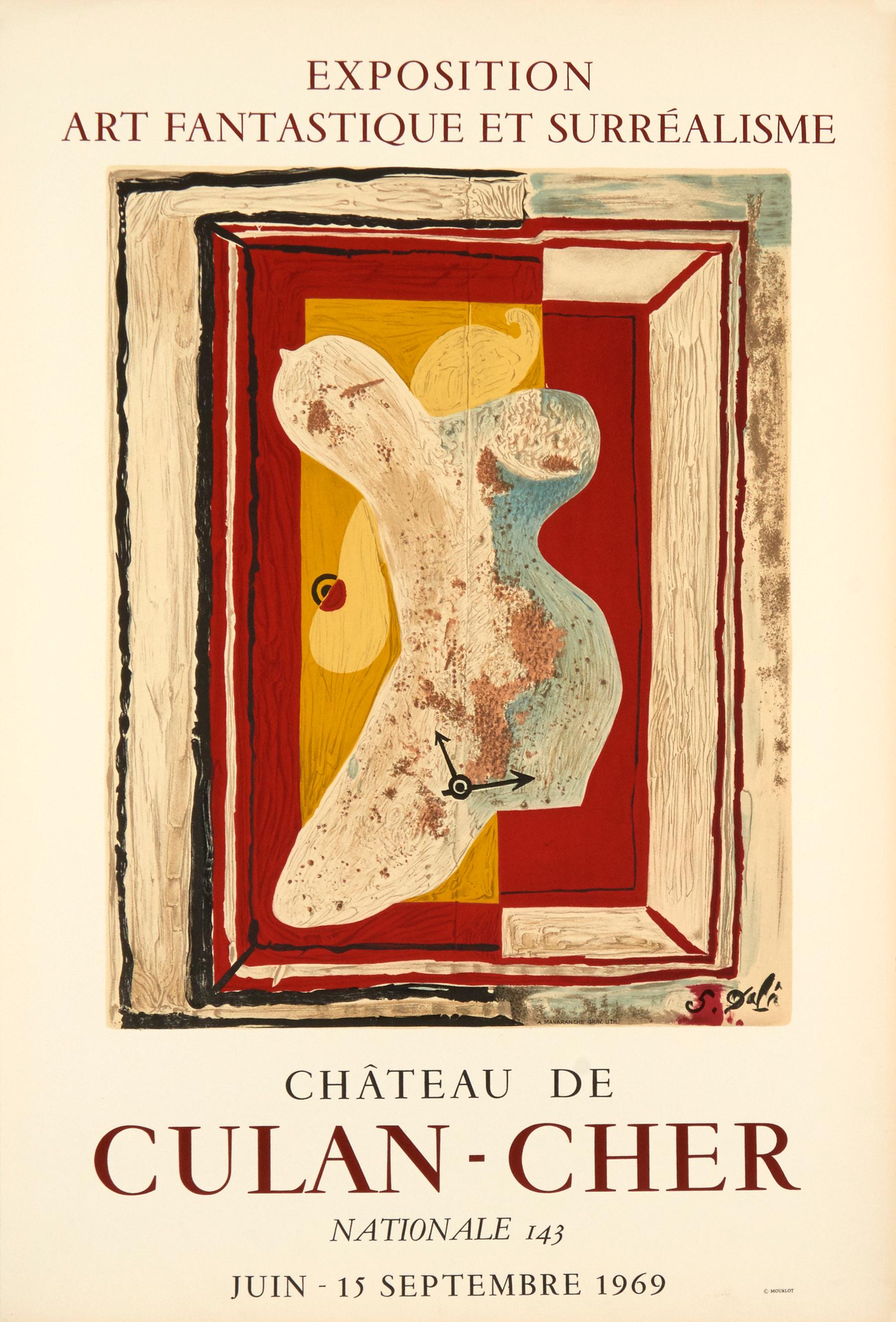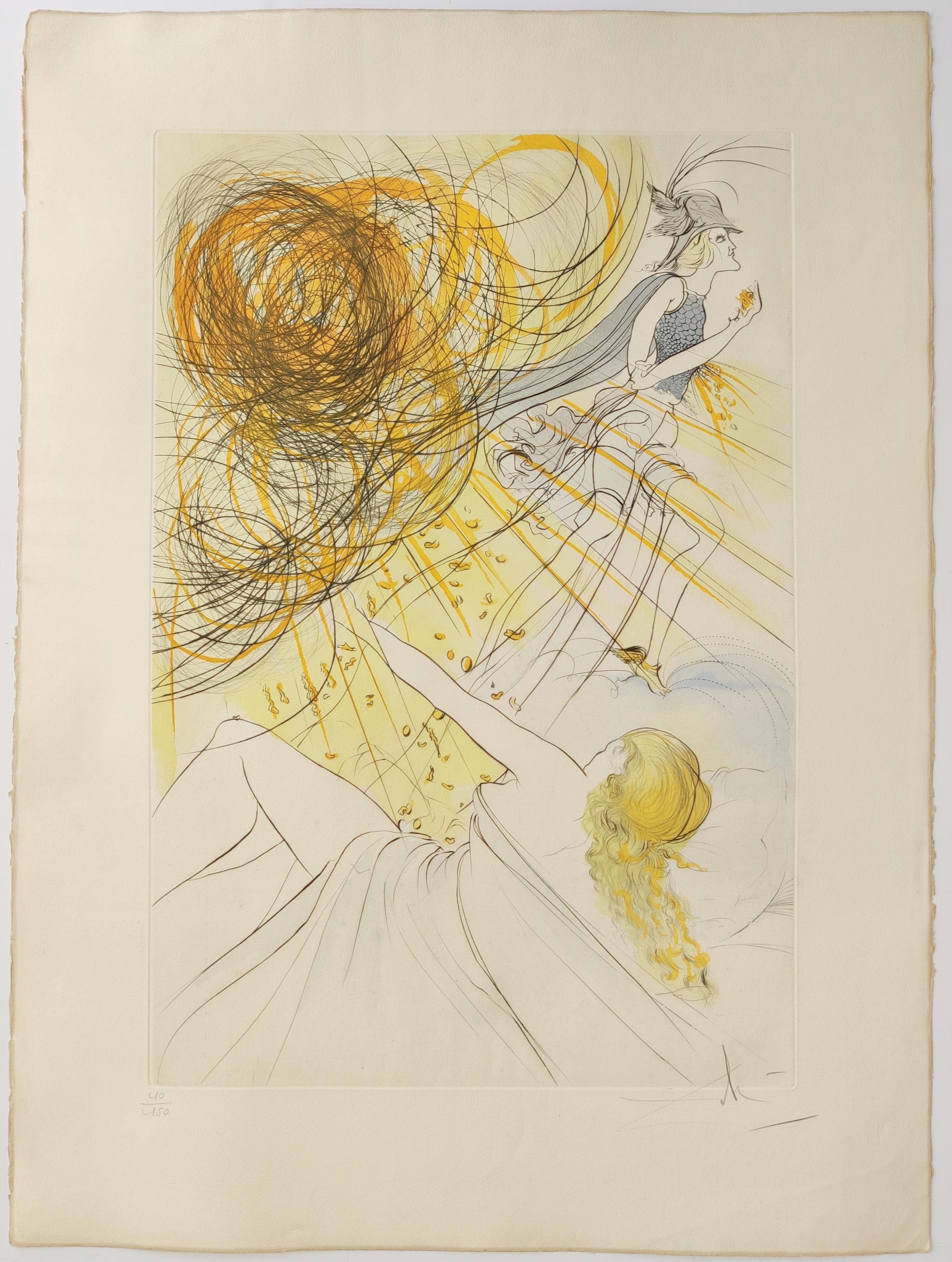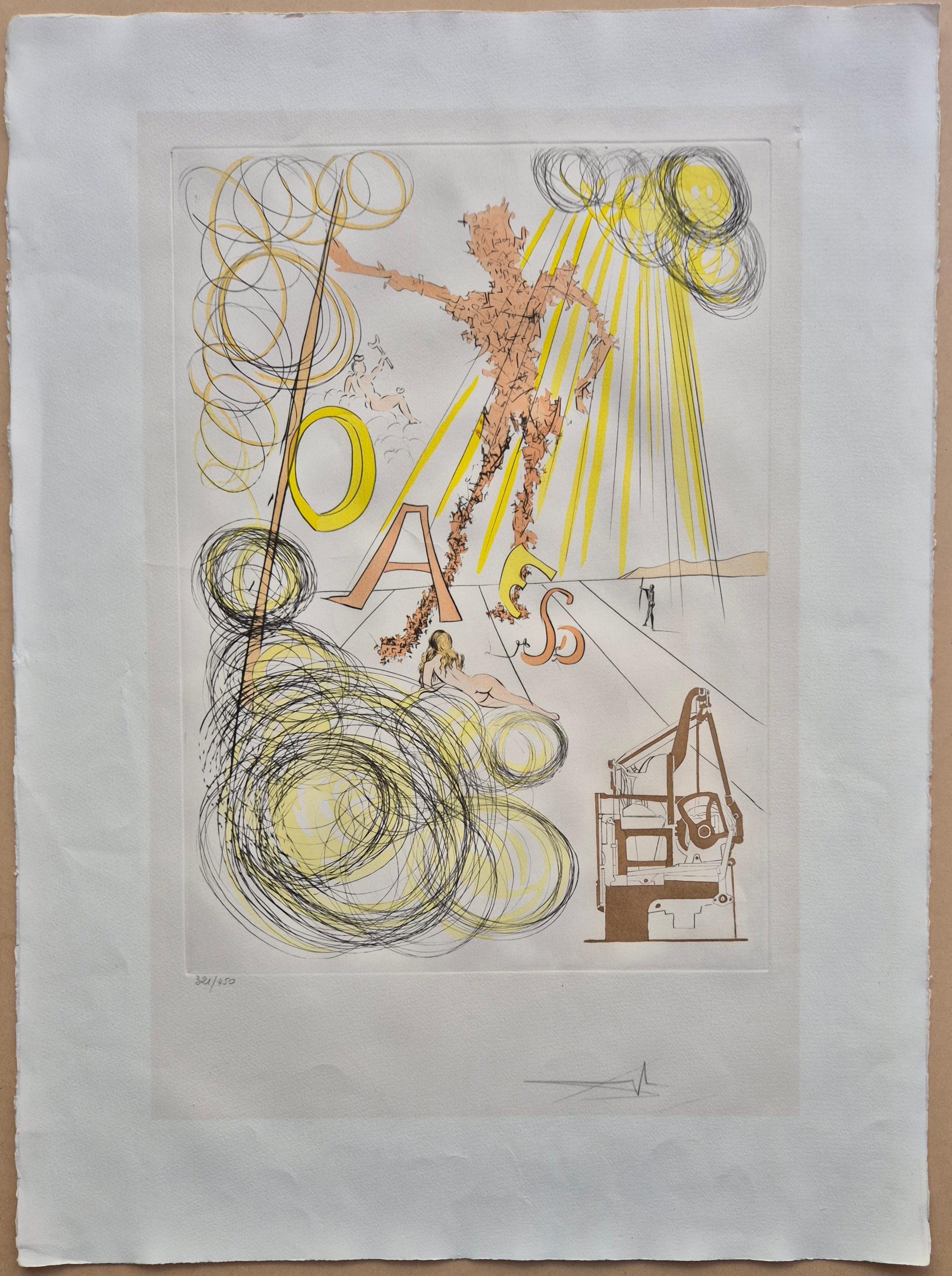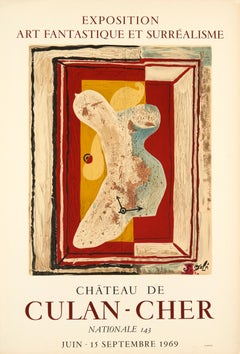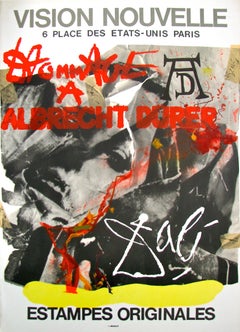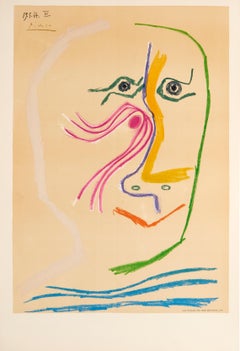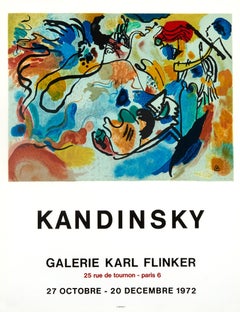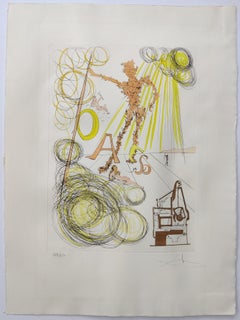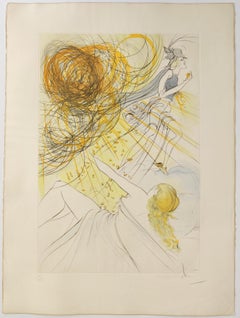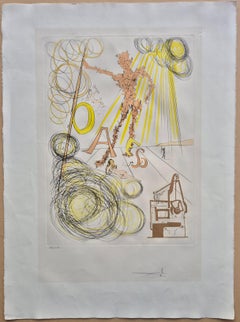Items Similar to "L'Art Dans Les Bijoux"(after) Salvador Dali, 1971
Want more images or videos?
Request additional images or videos from the seller
1 of 5
"L'Art Dans Les Bijoux"(after) Salvador Dali, 19711971
1971
$550
£426.45
€483.89
CA$788.40
A$857.27
CHF 451.70
MX$10,413.39
NOK 5,678.78
SEK 5,323.40
DKK 3,631.18
About the Item
Artist: Salvador Dali
Medium: Lithographic Poster, 1971
Dimensions: 26.3 x 20 in / 66.8 x 50.8 cm
Classic poster paper - Condition A+
This offset poster by Salvador Dali, was printed by Mourlot in Paris for the Wally F. Findlay Galleries in 1971 to promote jewelry created by the artist.
Dali subscribed to the surrealist André Breton's theory of automatism but ultimately opted for a method of tapping into the unconscious that he termed "critical paranoia," a state in which one could cultivate delusion while maintaining one's sanity. Paradoxically defined by Dali himself as a form of "irrational knowledge," the paranoiac-critical method was applied by his contemporaries, mostly surrealists, to varied media, ranging from cinema to poetry to fashion.
- Creation Year:1971
- Dimensions:Height: 26.3 in (66.81 cm)Width: 20 in (50.8 cm)
- Medium:
- After:(after) Salvador Dali (1904 - 1989, Spanish)
- Period:
- Condition:
- Gallery Location:New York, NY
- Reference Number:1stDibs: LU1323210756642
About the Seller
4.9
Recognized Seller
These prestigious sellers are industry leaders and represent the highest echelon for item quality and design.
Gold Seller
Premium sellers maintaining a 4.3+ rating and 24-hour response times
Established in 1852
1stDibs seller since 2019
222 sales on 1stDibs
Typical response time: <1 hour
- ShippingRetrieving quote...Shipping from: New York, NY
- Return Policy
Authenticity Guarantee
In the unlikely event there’s an issue with an item’s authenticity, contact us within 1 year for a full refund. DetailsMoney-Back Guarantee
If your item is not as described, is damaged in transit, or does not arrive, contact us within 7 days for a full refund. Details24-Hour Cancellation
You have a 24-hour grace period in which to reconsider your purchase, with no questions asked.Vetted Professional Sellers
Our world-class sellers must adhere to strict standards for service and quality, maintaining the integrity of our listings.Price-Match Guarantee
If you find that a seller listed the same item for a lower price elsewhere, we’ll match it.Trusted Global Delivery
Our best-in-class carrier network provides specialized shipping options worldwide, including custom delivery.More From This Seller
View AllChateau de Culan - Cher (after) Salvador Dali, 1969
By (after) Salvador Dali
Located in New York, NY
Artist: Salvador Dali
Medium: Lithographic Poster, 1969
Dimensions: 30.75 x 20.75 in, 78.1 x 52.7 cm
Arches Poster Paper - Condition A+
This lithographic poster was created after...
Category
1960s Prints and Multiples
Materials
Lithograph
Homage to Albrecht Durer 1971
By Salvador Dalí
Located in New York, NY
This lithographic poster after surrealist painter, Salvador Dali pays tribute to Albrecht Durer, a German painter and printmaker renowned for his religious iconography.
Dali subscr...
Category
1970s Modern More Prints
Materials
Lithograph
Hommage a Rene Char after Pablo Picasso
By Pablo Picasso
Located in New York, NY
This colorful lithograph after Pablo Picasso was printed by the Atelier Mourlot in Paris in 1964 and is unsigned*. This image is taken from a drawing in pencil and colored chalk enti...
Category
1960s Modern Abstract Prints
Materials
Lithograph
$2,800 Sale Price
20% Off
Kandinsky - Galerie Karl Flinker (after) Wassily Kandinsky, 1972
By Wassily Kandinsky
Located in New York, NY
Artist: Wassily Kandinsky
Medium: Lithographic Poster, 1972
Dimensions: 28 x 21.8 in, 71 x 55.4 cm
Classic Poster Paper - Excellent Condition A
Here is a near angelic representat...
Category
1970s Prints and Multiples
Materials
Lithograph
Neue Gallerie (With Writing) After Maurice Esteve, 1970
By Maurice Estève
Located in New York, NY
Artist: After Maurice Estève
Medium: Original Lithographic Poster, 1970
Dimensions: 33.5 x 21.25 in, 85.1 x 54 cm
Classic Poster Paper - Perfect Condition A
Maurice Estève create...
Category
1970s Prints and Multiples
Materials
Lithograph
Le Peintre a la Palette - Galerie des Pochettes
By (after) Marc Chagall
Located in New York, NY
Artist: Marc Chagall
Medium: Lithographic Poster, 1958
Dimensions: 25.5 x 18.8 in, 65 x 48cm
Velin Paper - Excellent Condition A
This poster was...
Category
1950s Prints and Multiples
Materials
Lithograph
You May Also Like
Salvador Dali -- Hommage to Leonardo da Vinci
By Salvador Dalí
Located in BRUCE, ACT
Salvador Dali
Hommage to Leonardo da Vinci, 1975
Hand signed lower right
Numbered 288/450
Sheet size 76 x 56 cm
Printed by Ateliers Rigal, Paris
Published by Transworld Art, New York...
Category
1970s Prints and Multiples
Materials
Engraving
Salvador Dali -- Homage To Mercure
By Salvador Dalí
Located in BRUCE, ACT
Salvador Dali
Hommage à Mercure, 1973
Hand signed lower right
Numbered 10 / 150 lower left.
Printed by Ateliers Rigal, Paris.
Published by Joseph Foret, Paris.
Reference Michler...
Category
1970s Prints and Multiples
Materials
Engraving
Salvador Dali -- Hommage to Leonardo da Vinci
By Salvador Dalí
Located in BRUCE, ACT
Salvador Dali
Hommage to Leonardo da Vinci, 1975
Hand signed lower right
Numbered 321/450
Sheet size 76 x 56 cm
Printed by Ateliers Rigal, Paris
Published by Transworld Art, New York...
Category
1970s Prints and Multiples
Materials
Engraving
Hommage aux Petits Lits Blancs
By Salvador Dalí
Located in Hollywood, FL
ARTIST: Salvador Dali
TITLE:Hommage aux Petites Lits Blancs
MEDIUM: Lithograph done for Wally Findlay Gallery
SIGNED: Hand Signed
PRINTER: Mourlot Printers
EDITION NUMBER: 87/2...
Category
1970s Surrealist More Prints
Materials
Lithograph
Memories of Surrealism Surrealist King
By Salvador Dalí
Located in Hollywood, FL
ARTIST: Salvador Dali
TITLE: Memories of Surrealism Surrealist King
MEDIUM: Etching on Japon Paper
SIGNED: Hand Signed by Salvador Dali
EDITION NUMBER: A XXX/XL
MEASUREMENTS: 29...
Category
1970s Surrealist More Prints
Materials
Etching
The Divine Word
By Salvador Dalí
Located in OPOLE, PL
Salvador Dali (1904-1989) - The Divine Word
Lithograph from 1973.
Editon 101/250 on Arches paper.
Dimensions of work: 65 x 48 cm
Publisher: Carpentier.
Reference: Michler-Löpsin...
Category
1970s Modern More Prints
Materials
Lithograph
More Ways To Browse
1971 Jewelry
Salvador Dali 1971
Vintage Posters Salvador Dali
Salvador Dali Orange
Les Bijoux Vintage
Macabre Art
Marc Chagall Jerusalem
Mars Sculpture
Matisse Poesies
Max Walter Svanberg
N Miro
Old Man Etching
Original Etching Marc Chagall
Oxford Etching
Picasso Untitled
Prince Signed
Royal Yacht Britannia
Saddam Hussein
